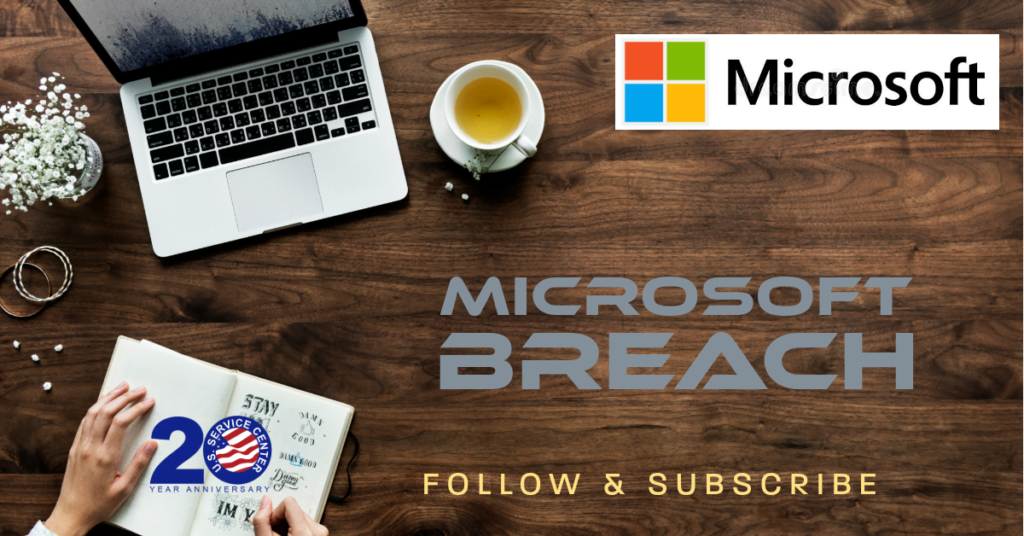Microsoft Breach of employee accounts from November 2023 through January 2024. The threat actor accessed key employee accounts for 3 months. It was detected on January 12, 2024, and reported to the SEC (Security and Exchange Commission) on Form 8-K on January 17, 2024. The threat actor was in key employee accounts from November 2023 through January 13, 2024.
As stated on the form 8-K
Item 1.05. Material Cybersecurity Incidents
On January 12, 2024, Microsoft (the “Company” or “we”) detected that beginning in late November 2023, a nation-state associated threat actor had gained access to and exfiltrated information from a very small percentage of employee email accounts including members of our senior leadership team and employees in our cybersecurity, legal, and other functions, on the basis of preliminary analysis. We were able to remove the threat actor’s access to the email accounts on or about January 13, 2024. We are examining the information accessed to determine the impact of the incident. We also continue to investigate the extent of the incident. We have notified and are working with law enforcement. We are also notifying relevant regulatory authorities with respect to unauthorized access to personal information. As of the date of this filing, the incident has not had a material impact on the Company’s operations. The Company has not yet determined whether the incident is reasonably likely to materially impact the Company’s financial condition or results of operations.
Exhibit 99.1 – Microsoft Actions Following Attack by Nation State Actor Midnight Blizzard
The Microsoft security team detected a nation-state attack on our corporate systems on January 12, 2024, and immediately activated our response process to investigate, disrupt malicious activity, mitigate the attack, and deny the threat actor further access. Microsoft has identified the threat actor as Midnight Blizzard, the Russian state-sponsored actor also known as Nobelium. As part of our ongoing commitment to responsible transparency as recently affirmed in our Secure Future Initiative (SFI), we are sharing this update.
Beginning in late November 2023, the threat actor used a password spray attack to compromise a legacy non-production test tenant account and gain a foothold, and then used the account’s permissions to access a very small percentage of Microsoft corporate email accounts, including members of our senior leadership team and employees in our cybersecurity, legal, and other functions, and exfiltrated some emails and attached documents. The investigation indicates they were initially targeting email accounts for information related to Midnight Blizzard itself. We are in the process of notifying employees whose email was accessed.
The attack was not the result of a vulnerability in Microsoft products or services. To date, there is no evidence that the threat actor had any access to customer environments, production systems, source code, or AI systems. We will notify customers if any action is required.
This attack does highlight the continued risk posed to all organizations from well-resourced nation-state threat actors like Midnight Blizzard.
As we said late last year when we announced Secure Future Initiative (SFI), given the reality of threat actors that are resourced and funded by nation states, we are shifting the balance we need to strike between security and business risk – the traditional sort of calculus is simply no longer sufficient. For Microsoft, this incident has highlighted the urgent need to move even faster. We will act immediately to apply our current security standards to Microsoft-owned legacy systems and internal business processes, even when these changes might cause disruption to existing business processes.
This will likely cause some level of disruption while we adapt to this new reality, but this is a necessary step, and only the first of several we will be taking to embrace this philosophy.
We are continuing our investigation and will take additional actions based on the outcomes of this investigation and will continue working with law enforcement and appropriate regulators. We are deeply committed to sharing more information and our learnings, so that the community can benefit from both our experience and observations about the threat actor. We will provide additional details as appropriate.

